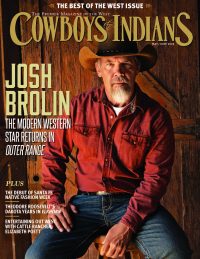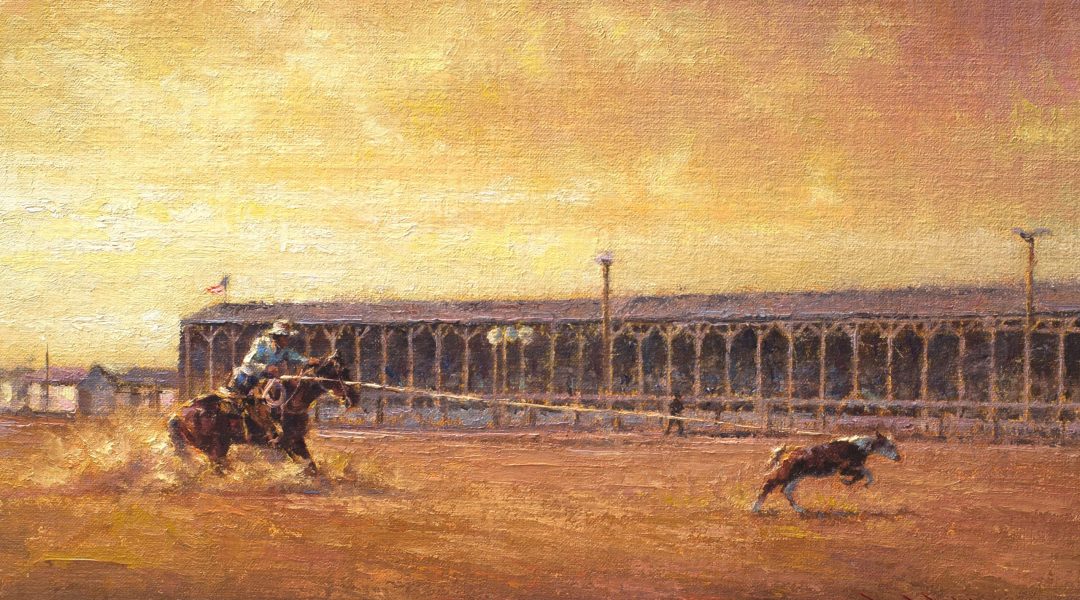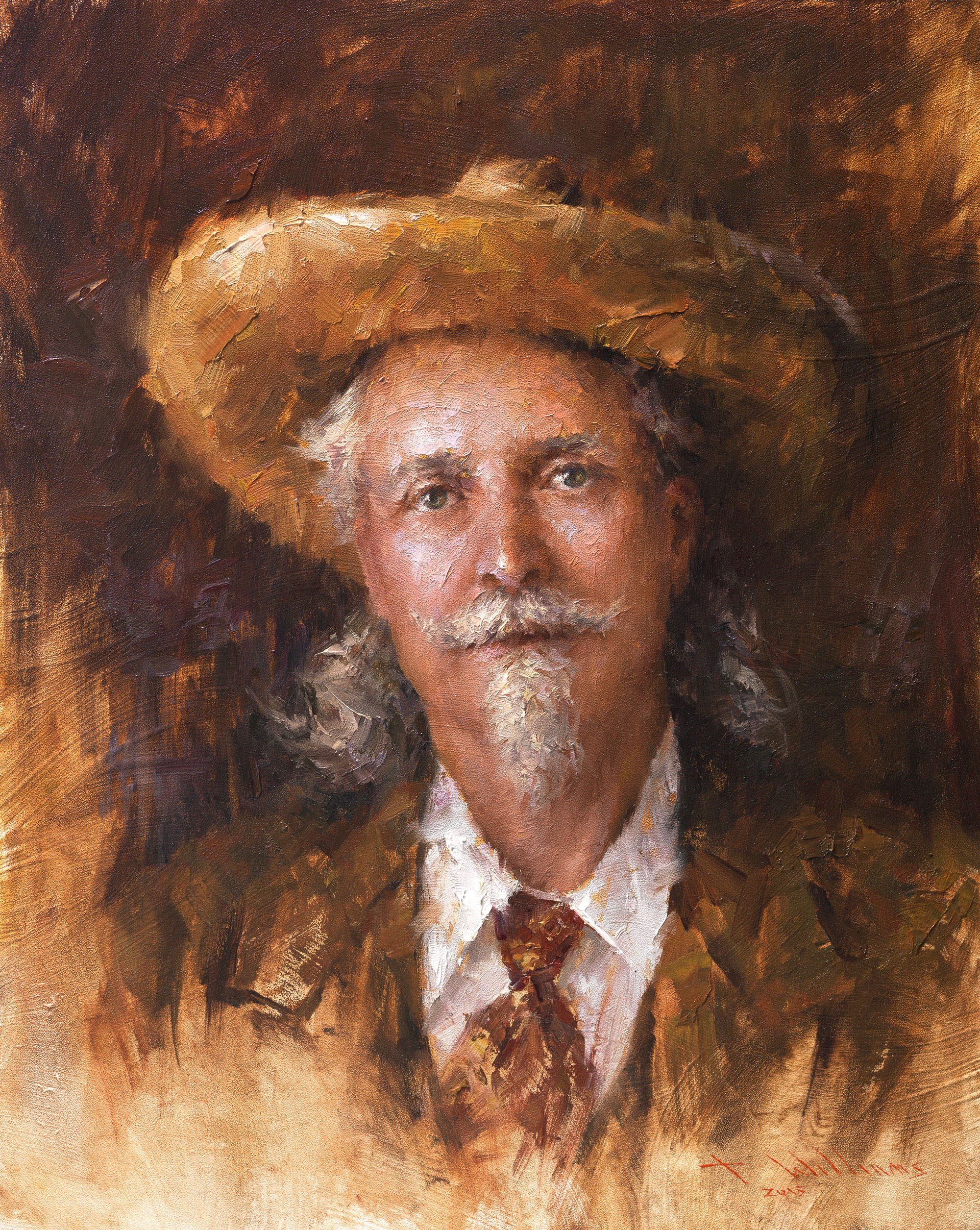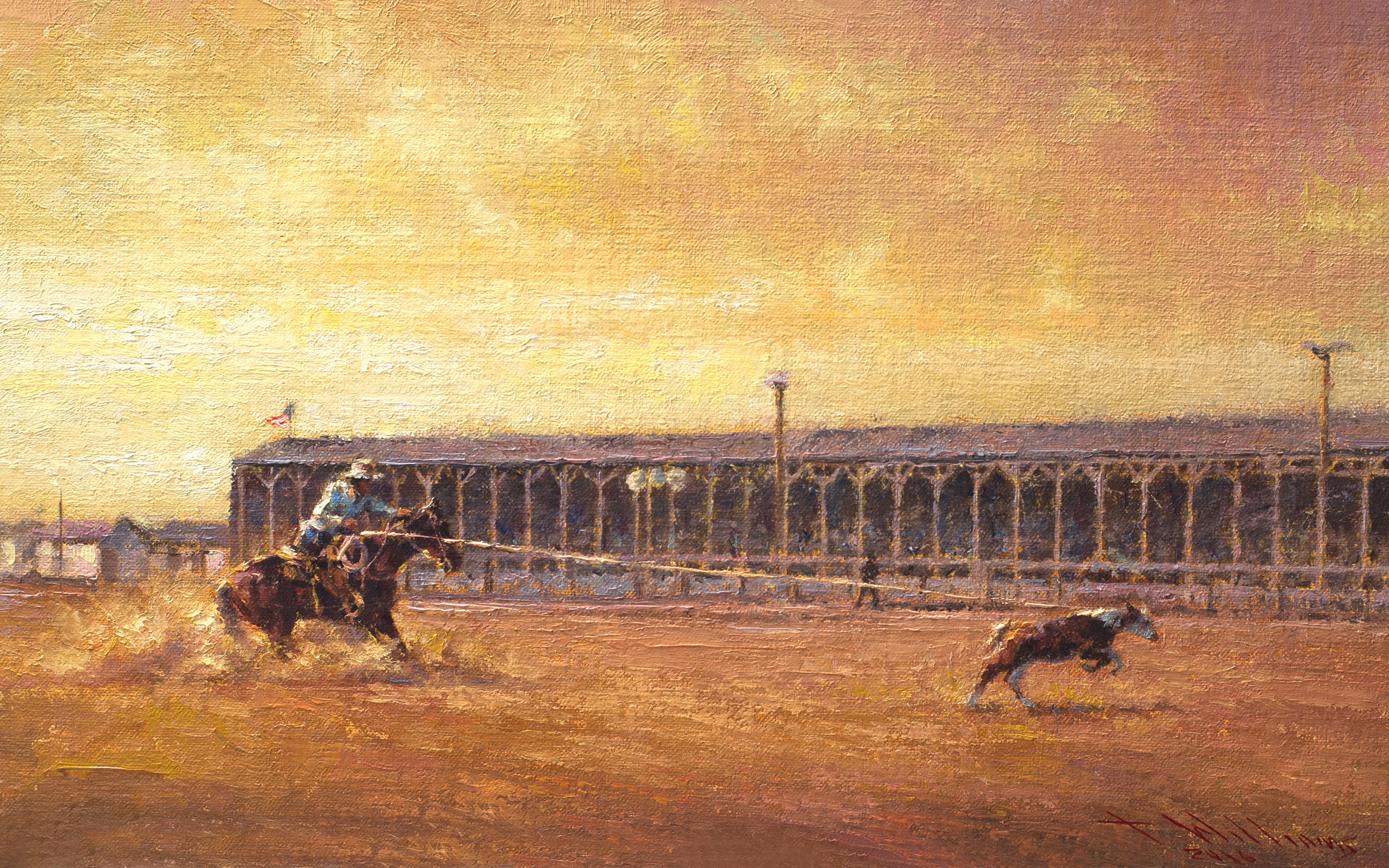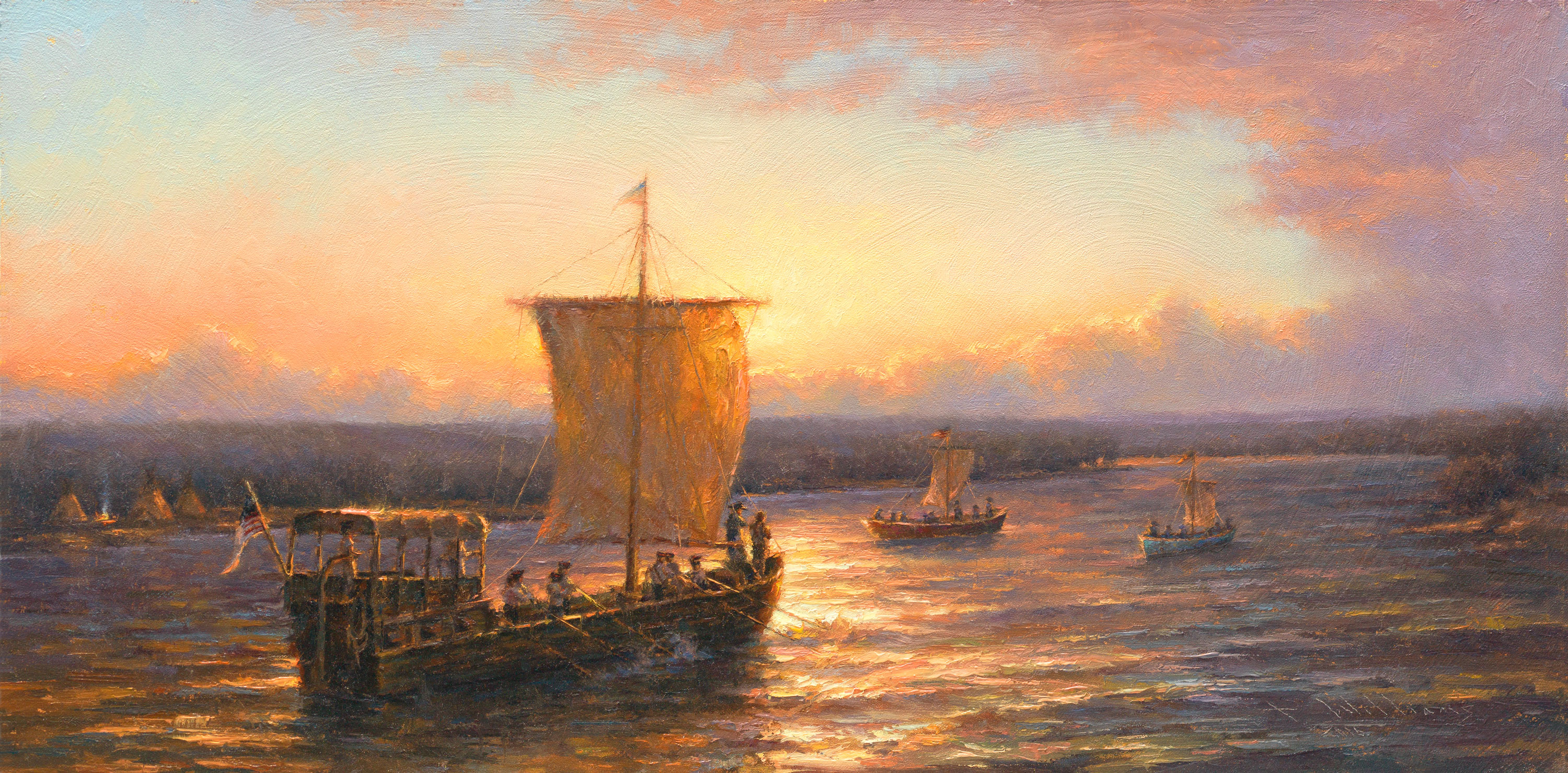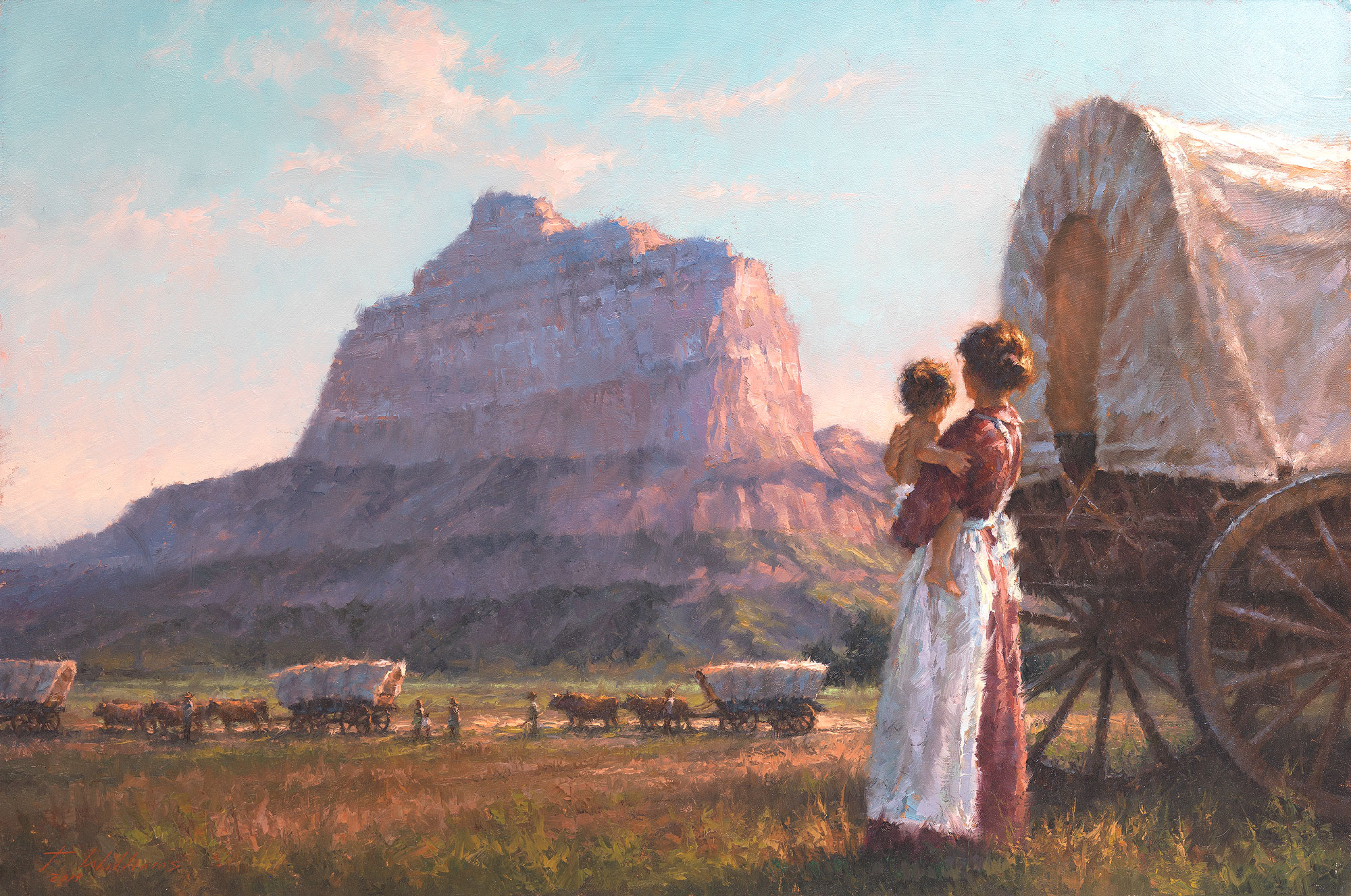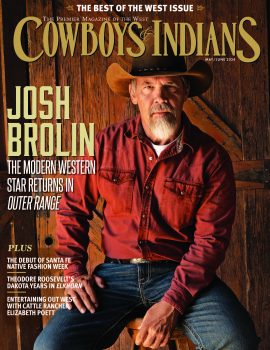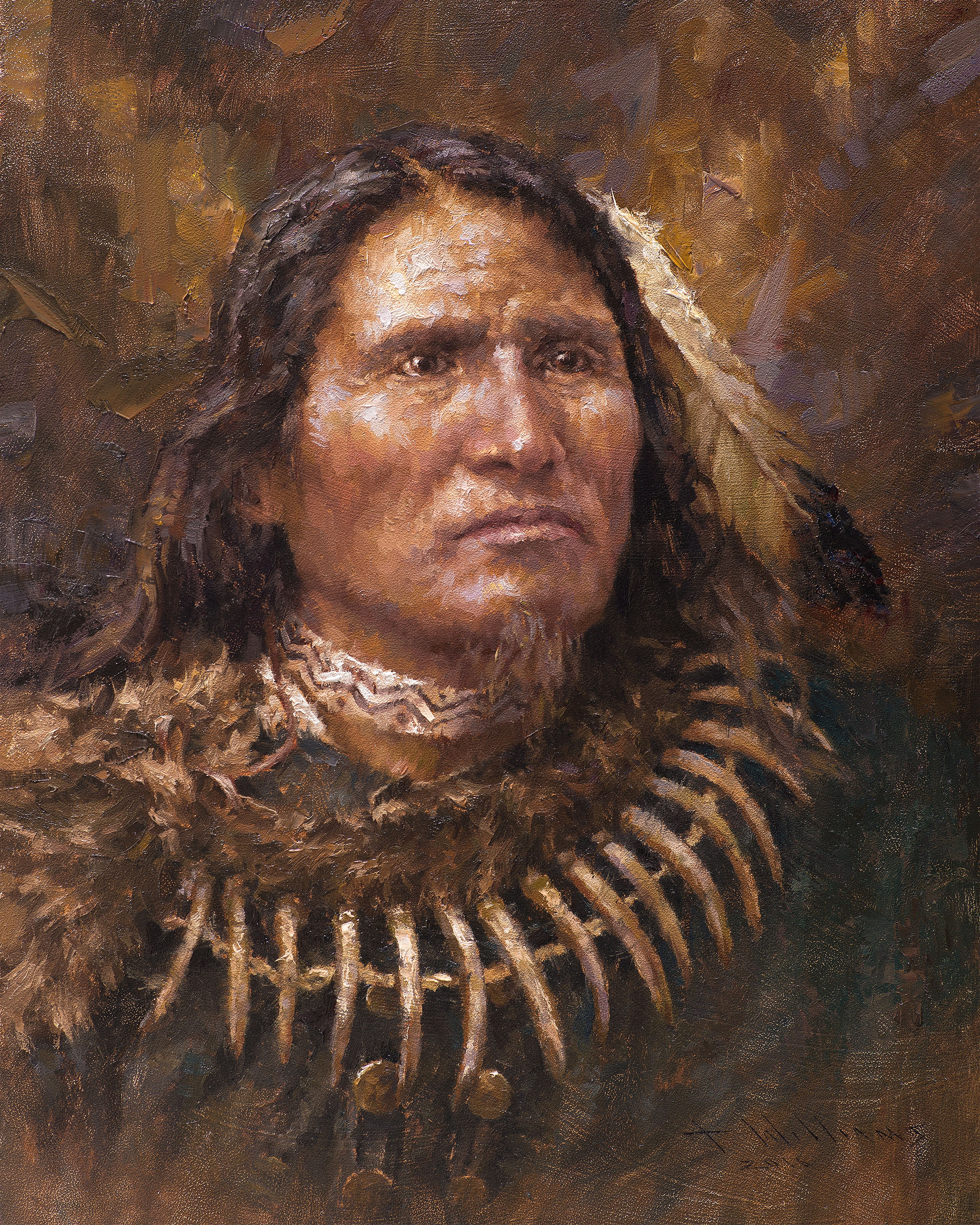
The Nebraska native commemorates the state’s history in a series of paintings.
To commemorate Nebraska’s sesquicentennial, Nebraska native Todd A. Williams, an award-winning painter who grew up in the small farming community of Central City, had an idea: create paintings to represent each one of the state’s 93 counties. The project would take five years; more than 10,000 miles logged on three different family cars (his 1997 GMC Jimmy died in Aurora on the way to Omaha); and help from his wife, mother, and father, all of whom still live in central Nebraska.
Officially endorsed by the governor and Nebraska Sesquicentennial Commission, the project naturally began with research. Williams visited historical societies in small towns, sitting at wooden tables in musty corners thumbing through files of old black-and-white photos and newspaper clippings that had yellowed with age. He took photos of the state’s vast landscape, its farms, its old train depots. He interviewed historians. Some of the paintings were done on-site, with his traveling easel and oil paints, applied with a knife and a brush, impressionist-style; most were created back home, in his sunroom studio.
By the end of the project, Williams had completed 122 paintings in all and had achieved what he’d started out to do: “I wanted to help others see Nebraska through the eyes of an artist.”
C&I talked with Williams about the backstories of some of the many standouts among the dozens of accomplished paintings in his Legacy of Nebraska project.
William Frederick (Buffalo Bill) Cody — Lincoln County
American scout, bison hunter, and showman William Frederick Cody was born in 1846 in Iowa Territory, but he made a real name for himself in Nebraska. Famous for the traveling outdoor exhibition he founded in 1883 in North Platte, Nebraska, Cody would go on to take the romance and culture of the West around the United States and to Europe in his Wild West shows.
“William F. ‘Buffalo Bill’ Cody opened Buffalo Bill’s Wild West show on May 19, 1883, at Omaha, Nebraska,” writes Paul Fees, former curator of the Buffalo Bill Museum. “His partner that first season was a dentist and exhibition shooter, Dr. W.F. Carver. Cody and Carver took the show, subtitled ‘Rocky Mountain and Prairie Exhibition,’ across the country to popular acclaim and favorable reviews, launching a genre of outdoor entertainment that thrived for three decades and survived, in fits and starts, for almost three more.”
Williams says, “I wanted to do a painting where you could look into his eyes and see the man for himself and sense his spirit.”
Standing Bear — Dixon County
Chief Standing Bear was the first American Indian to be recognized as a person. The Ponca tribal leader successfully argued in U.S. District Court in Standing Bear v. Crook in 1879 in Omaha that Native Americans were “persons within the meaning of the law” and had the right of habeas corpus. The case was the ultimate consequence of a promise the leader had made to his deceased 16-year-old son to bury him on Ponca lands from which the tribe had been evicted. Ultimately, Standing Bear and part of his tribe returned to the fertile valleys between the Niobrara River and Ponca Creek, but they were no longer recognized as a tribe.
“This is one of my favorite paintings in the series,” Williams says. “I love the rich history of the Native Americans, and I love the whole story of Chief Standing Bear.”
Juan Salinas — Nebraska’s Big Rodeo — Garfield County
Almost 100 years ago, the city of Burwell hosted the first of an annual event that’s still going strong today. It was meant to put the small town on the cowboy map, and it did. Held each July, Nebraska’s Big Rodeo is part of the sport’s circuit today, and one of the oldest rodeos in the United States.
“Juan Salinas was one of the best calf ropers ever, and he spent a lot of time in Nebraska,” Williams says of the subject he chose to portray the famous rodeo. “He was one of the stars. I learned about him through the historical society in Burwell. He was also the first Mexican-American to be inducted into the Rodeo Hall of Fame [in Oklahoma City]. Even though he wasn’t from Nebraska he helped create Nebraska’s history through the rodeo.”
Lewis and Clark Expedition — 1804 — Otoe County
Half a century before Nebraska was a state, the famous duo, in their nationwide quest to find the most straightforward navigable waters, anchored their 55-foot keelboat along the Missouri River just below what is now Nebraska City. Gusty prairie winds, rocks, sandbars, and uneven banks made the trip difficult, but the pair made it through the unsettled land and eventually to their final destination, the Pacific Ocean.
“It was fascinating to read journals from the Lewis and Clark Expedition, and they gave me a lot of insight, what those boats looked like, and what they did day to day. I love drama and anything that creates that ‘wow’ factor, so I really played up that romanticized version of what it might have looked like, with the sun setting, with clouds and water, and how light would radiate and reflect off of the water.”
Rock Island Station — Pawnee County
“Without the railroad, the West wouldn’t exist,” Williams says. “There were some cool old depots I found and I wanted to preserve their history, so I imagined people saying goodbye to loved ones, wishing them well on their journey. I love the romanticism of train travel of that era, part of that great western journey.”
Corn Harvest — Greeley County
“What’s fascinating about the cornfields of Nebraska is how they look different in all the seasons. You’re looking at a field after it was harvested the year before, then ploughed, and then stalks come up and then it changes from the green to the golden to the brown color. I’ve always found it fascinating how the colors of the cornfields change. This is right at harvest, kind of a rolling hill, and off to the left you can see a traditional John Deere tractor next to the combine as it collects the corn.”
Mitchell Pass — Oregon Trail — Scotts Bluff County
The narrow Mitchell Pass — a gap through the Scotts Bluff Ridge in far west Nebraska on the Old Oregon Trail in what is now Scotts Bluff National Monument — is well-noted in the diaries of pioneers who, with their covered wagons, threaded single-file through the passage on ground deeply eroded from wooden wheels and draft animals that had come before.
“I really wanted to give it that personal human touch — to have that tenderness and human element of mother and child. I don’t have this happen all the time, but for that particular painting, when I learned more about Scotts Bluff and Mitchell Pass, I had a vision come to me: I saw a mother holding a baby and I saw her standing next to a wagon. They’re getting ready to take off at sunrise.”
Todd A. Williams’ Painting the Legacy of Nebraska series will be on view at the Nebraska History Museum in Lincoln from March 1 to June 4 and will travel throughout the state for the rest of the year. To see all the Nebraska paintings and for information about purchasing Williams’ book Painting the Legacy of Nebraska, visit the artist’s website. Williams is represented by Whistle Pik Galleries in Fredericksburg, Texas.



